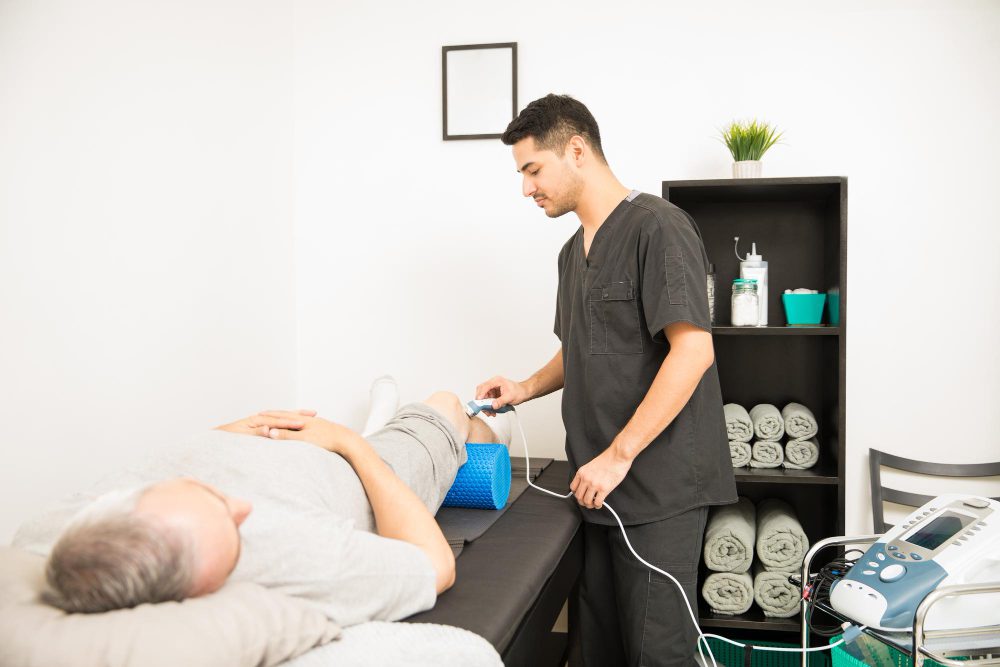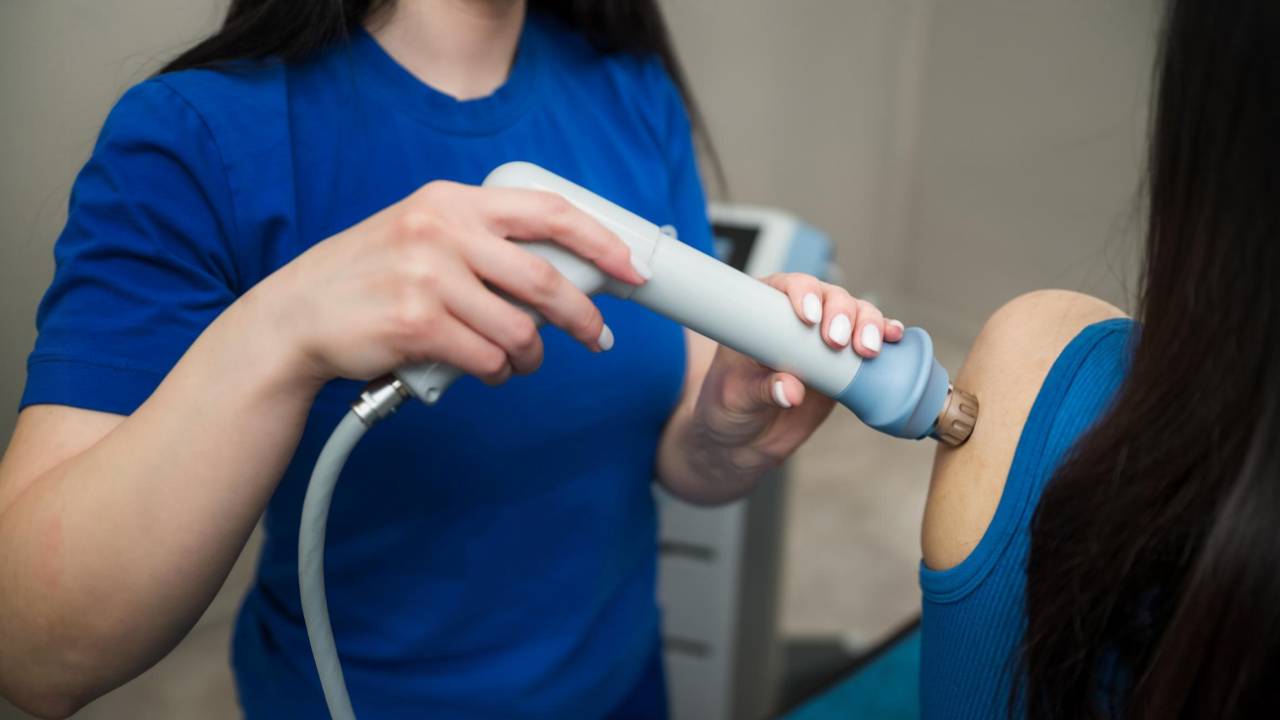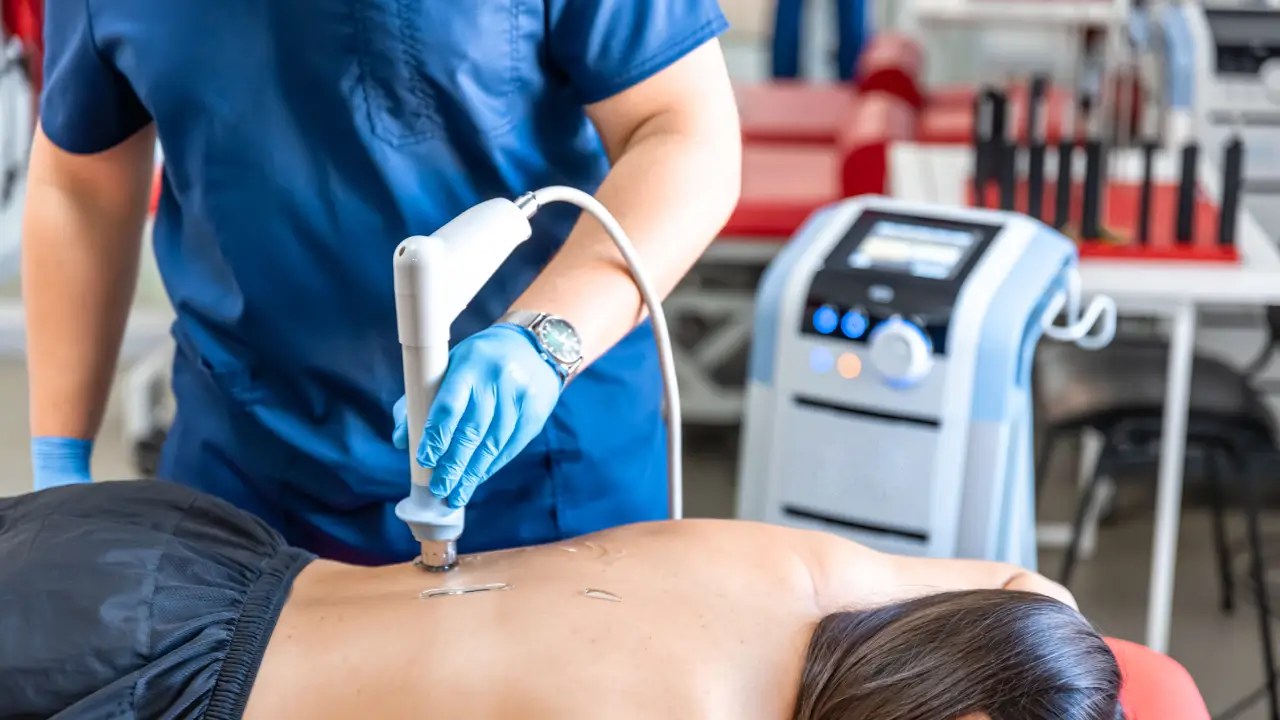Shockwave Therapy in Woodbridge
What Is Shockwave Therapy? Shockwave Therapy, also known as Extracorporeal Shockwave Therapy (ESWT), involves the application of focused, high-energy acoustic waves to targeted tissues. Initially developed for lithotripsy to break kidney stones, its use has expanded to orthopedic and rehabilitation medicine.
The shockwaves create mechanical stimuli that induce microtrauma and mechanotransduction in tissues, triggering biological responses essential for healing. It involves forming new blood vessels (neovascularization), stimulating collagen production, and modulating inflammatory processes.
There are two primary types:
Focused Shockwave Therapy: Delivers energy to a specific deep tissue site.
Radial Shockwave Therapy: More superficial, with energy dispersing over a wider area.
Both types are used clinically depending on the condition treated.
Why Consider Shockwave Therapy in Woodbridge?
Chronic tendinopathies, plantar fasciitis, calcific shoulder tendinitis, and other soft tissue injuries can be refractory to conventional treatments such as rest, NSAIDs, corticosteroid injections, or physical Therapy.
Shockwave Therapy in Woodbridge offers an alternative by addressing the underlying tissue pathology rather than solely alleviating symptoms. It is beautiful because:
- It is minimally invasive with a low risk of complications.
- It may reduce the need for corticosteroid injections and surgery.
- It promotes tissue regeneration through biologically plausible mechanisms.
- It allows for outpatient treatment with minimal downtime.

How Does Shockwave Therapy Work?
The procedure involves using a handheld device that emits acoustic shockwaves to the treatment area. Shockwave Therapy induces a series of physiological effects critical for tissue repair:
- Mechanotransduction: The mechanical energy from shockwaves is converted into biochemical signals in cells, activating signalling pathways that promote healing.
- Angiogenesis: Shockwaves stimulate the release of vascular endothelial growth factor (VEGF), encouraging new blood vessel growth and improved oxygen and nutrient delivery.
- Stem Cell Activation: Studies suggest that shockwaves may mobilize local stem cells, thereby aiding in regeneration.
- Pain Modulation: Shockwaves can influence nociceptors, reducing the release of pain mediators, such as substance P, thereby decreasing pain perception.
- Disintegration of Calcifications: In calcific tendinopathies, shockwaves mechanically disrupt calcium deposits, facilitating resorption.
- Collagen Synthesis: Enhanced fibroblast activity leads to increased collagen production, which is crucial for tendon and ligament repair.
7 Proven Reasons to Try Shockwave Therapy:
1. Non-Invasive Approach to Pain Management
One of the most significant advantages of Shockwave Therapy in Woodbridge is that it is entirely non-invasive. Unlike surgical interventions, it does not require any incisions or anesthesia. For individuals who want to avoid the risks and recovery time associated with surgery, this Therapy offers a less intimidating and safer option to manage pain.
The non-invasive nature also reduces the likelihood of complications, such as infections or scarring, making it suitable for a wide range of patients.
2. Versatility in Treating Various Conditions
Shockwave Therapy successfully treats several chronic musculoskeletal conditions, demonstrating its versatility. These include plantar fasciitis, tennis elbow, Achilles tendinitis, calcific tendinopathy of the shoulder, and patellar tendinopathy, among others.
The treatment’s ability to target different tissues and promote healing across various conditions makes Shockwave Therapy in Woodbridge a versatile option for many patients experiencing chronic pain in other parts of the body.
3. Stimulates Tissue Regeneration and Healing
Stimulates Tissue Regeneration and Healing. Unlike pharmacological treatments that mainly provide symptomatic relief, Shockwave Therapy enhances tissue regeneration by activating cellular processes and improving vascularization. This biologically restorative effect results in longer-lasting benefits and lower recurrence rates.
4. Convenient and Time-Efficient Treatment
Convenient and Time-Efficient Treatment Shockwave Therapy in Woodbridge is convenient for patients due to the short duration of each session. Typically, a session lasts about 15 to 20 minutes, and most treatment plans involve three to six sessions spaced one week apart.
This efficiency enables patients to incorporate treatments into their busy schedules without significant disruption. Since the Therapy is non-invasive, there is no downtime, and patients can return to their normal activities immediately.
5. Low Risk of Side Effects
Low Risk of Side Effects The safety profile of Shockwave Therapy is favourable, with minimal side effects. Most patients report only mild discomfort during the procedure, and occasional redness or swelling at the treatment site may occur, which usually resolves quickly.
Compared to surgical risks or the potential side effects of long-term medication use, Shockwave Therapy in Woodbridge offers a safer alternative for pain relief, making it accessible to a broad range of patients.
6. Enhances Other Pain Management Treatments
Shockwave therapy often enhances comprehensive pain management programs by integrating seamlessly with other treatments. It complements physical Therapy, exercise, or ergonomic adjustments to optimize overall recovery.
By targeting the source of tissue damage, Shockwave Therapy complements strengthening and mobility exercises, improving the effectiveness of the entire treatment plan. This integrative approach can lead to better outcomes and improved function.
7. Backed by Clinical Research
Backed by Clinical Research. Numerous clinical studies support the effectiveness of Shockwave Therapy for pain relief and functional improvement. Research has demonstrated significant reductions in pain and enhanced tissue healing for patients treated with shockwaves.
This scientific evidence reinforces the credibility of Shockwave Therapy in Woodbridge, giving patients confidence in choosing a treatment method that is not only innovative but also validated by research.

What to Expect During Shockwave Therapy in Woodbridge
When you opt for Shockwave Therapy in Woodbridge, your healthcare provider will first conduct a thorough assessment to confirm that the treatment suits your condition. The procedure is straightforward:
- The affected area is identified and prepared, often with a conductive gel.
- A handheld device delivers controlled shockwaves to the tissue.
- Sessions last 15–20 minutes with minimal discomfort.
- Clinicians usually schedule multiple sessions to achieve optimal results.
Post-treatment, most patients experience mild soreness but can continue daily activities without restrictions.
Is Shockwave Therapy Suitable for You?
Shockwave Therapy in Woodbridge may be ideal if you suffer from persistent pain that has not improved with traditional treatments or if you want to avoid invasive procedures. It’s essential to consult with a healthcare professional to ensure it’s appropriate for your specific condition.
Some conditions or health situations might require alternative or additional treatments, so professional guidance is key.
Moving Forward
Shockwave Therapy in Woodbridge is a scientifically supported, non-invasive treatment for various chronic musculoskeletal conditions. It offers a safe, effective alternative to surgery and prolonged medication use by stimulating natural healing processes and providing long-term pain relief.
The combination of clinical evidence, favourable safety profile, and patient convenience makes Shockwave Therapy a valuable option in modern pain management strategies. Consultation with our clinic can determine if this Therapy suits your individual needs.



